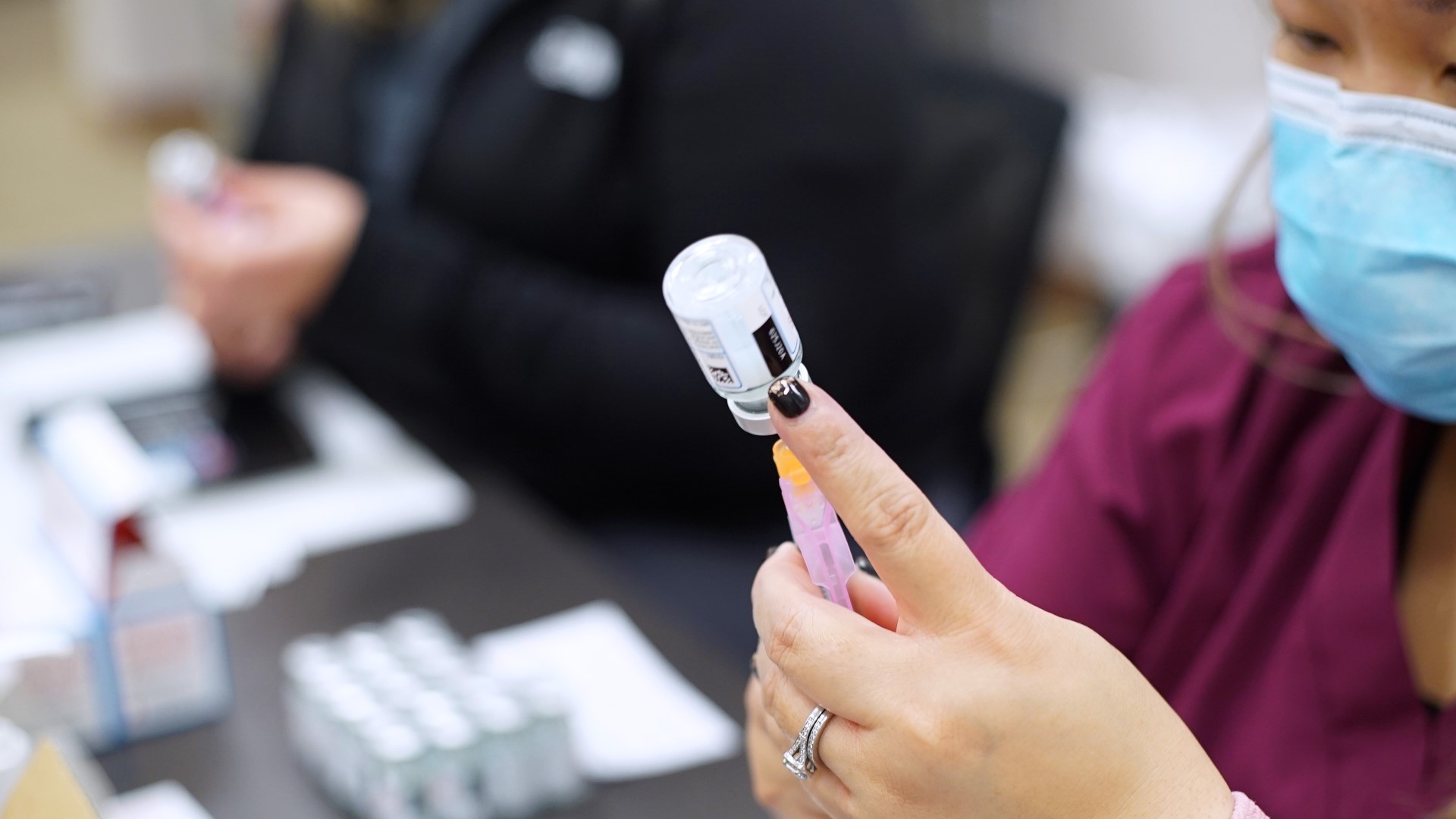COLUMBUS, Ohio — As the country slowly but steadily waits for various phases of COVID-19 vaccine rollouts, the Centers for Disease Control and the Ohio Department of Health are sharing demographic information of those getting vaccinated.
Each entity shows which racial and ethnic groups are getting vaccinated, and according to doctors in Columbus, there is a disparity.
As of Wednesday, Feb. 10, 2021, the CDC’s website shows around 62% of those getting vaccinated in the United States are white, just under 9% are Hispanic/Latino, just under 6% are Black and around 6% are Asian.
On the same day on the Ohio Department of Health’s COVID-19 Vaccine Dashboard, the disparities look similar to those across the country.
Why is this happening?
Ohio Health’s Dr. Joseph Gastaldo said health care disparities like these have always been around.
“The biggest thing is, obviously, is socio-economic class, but a lot of that too is culturally,” he said.
“If you’re from a lower socio-economic class, you’re less likely to have a smartphone, you’re less likely to have Wi-Fi. People from a lower socio-economic class are lower educated. Some people can’t read. Some people can’t write. Some people don’t have English as their first language.”
Without that education, there can be a sense of mistrust in the vaccine and its efficacy.
Dr. Edwin Vargas, also from Ohio Health, noted that 3.7% of Ohioans are Latinx/Hispanic, and about 2.9% of people in that group have been vaccinated.
He thinks that although the numbers are relatively fresh with a few possible discrepancies, they should change.
Dr. Vargas said the disparities come from what jobs Latinx/Hispanic people in the area and throughout the U.S. have. He says a lot of people in the Hispanic and Latinx community have jobs where they are essential.
“There is also a lack of access to health care, so when you don’t have a connection with a health care organization with your primary health doctor, it's really hard to one, be informed, second, ask questions about the vaccine," Vargas said.
“I feel that as you see more vaccinations, then this data should start changing,” he said.
With various vaccine outreach programs out there, Dr. Vargas is confident about the numbers changing, with a fix on various levels.
“Different organizations have noticed, in order to be effective with this vaccine, you have to reach out to these communities. Whether it is going to these communities directly and offer the vaccines there because a lot of these people have transportation issues.”
There is a societal shift Dr. Vargas wants to see, involving churches and other groups that, with the right resources, can hopefully educate their communities on the safety of getting the COVID-19 as well.
The Ohio Department of Health has an interactive map to find a vaccine provider near you here.

